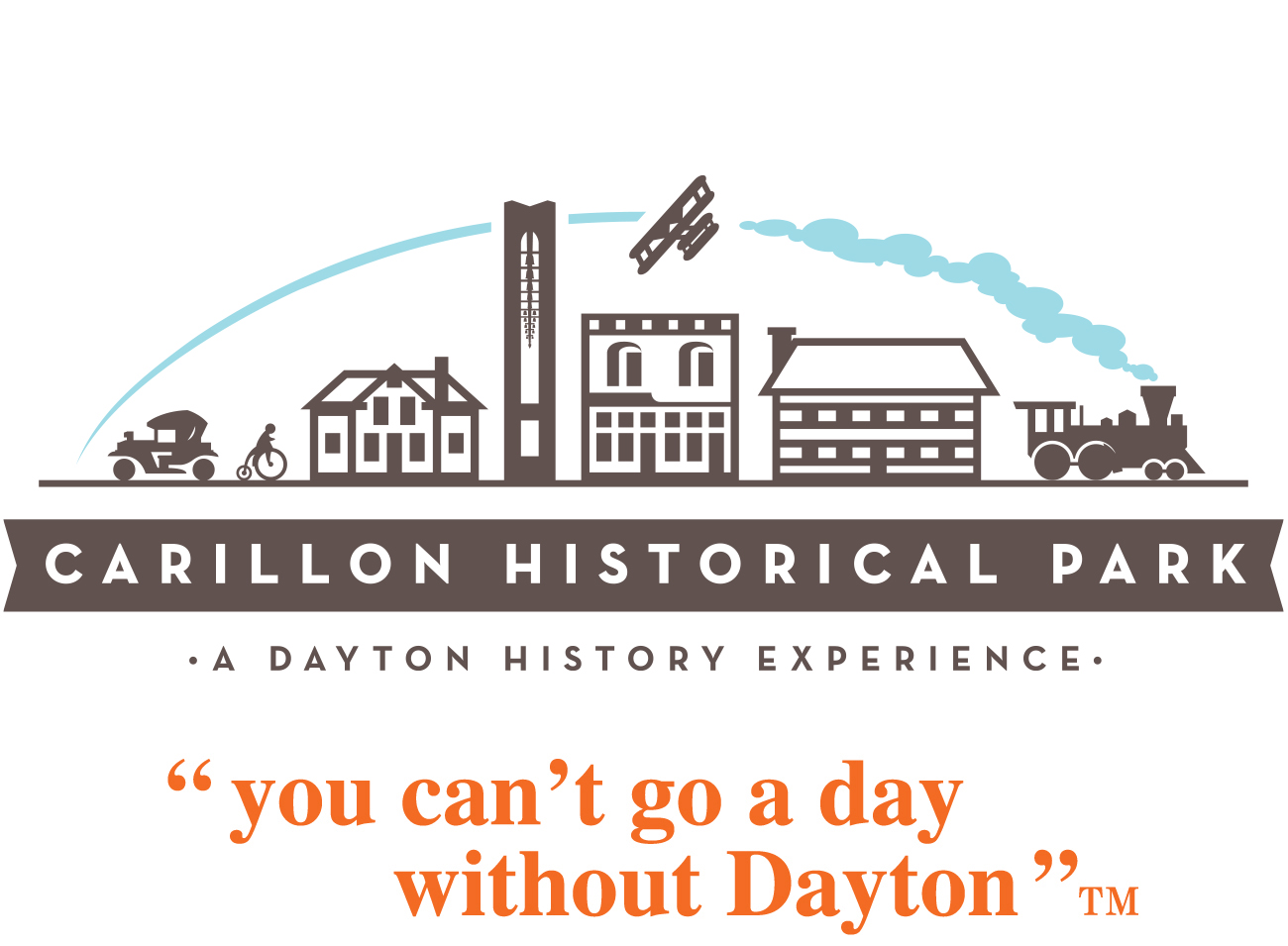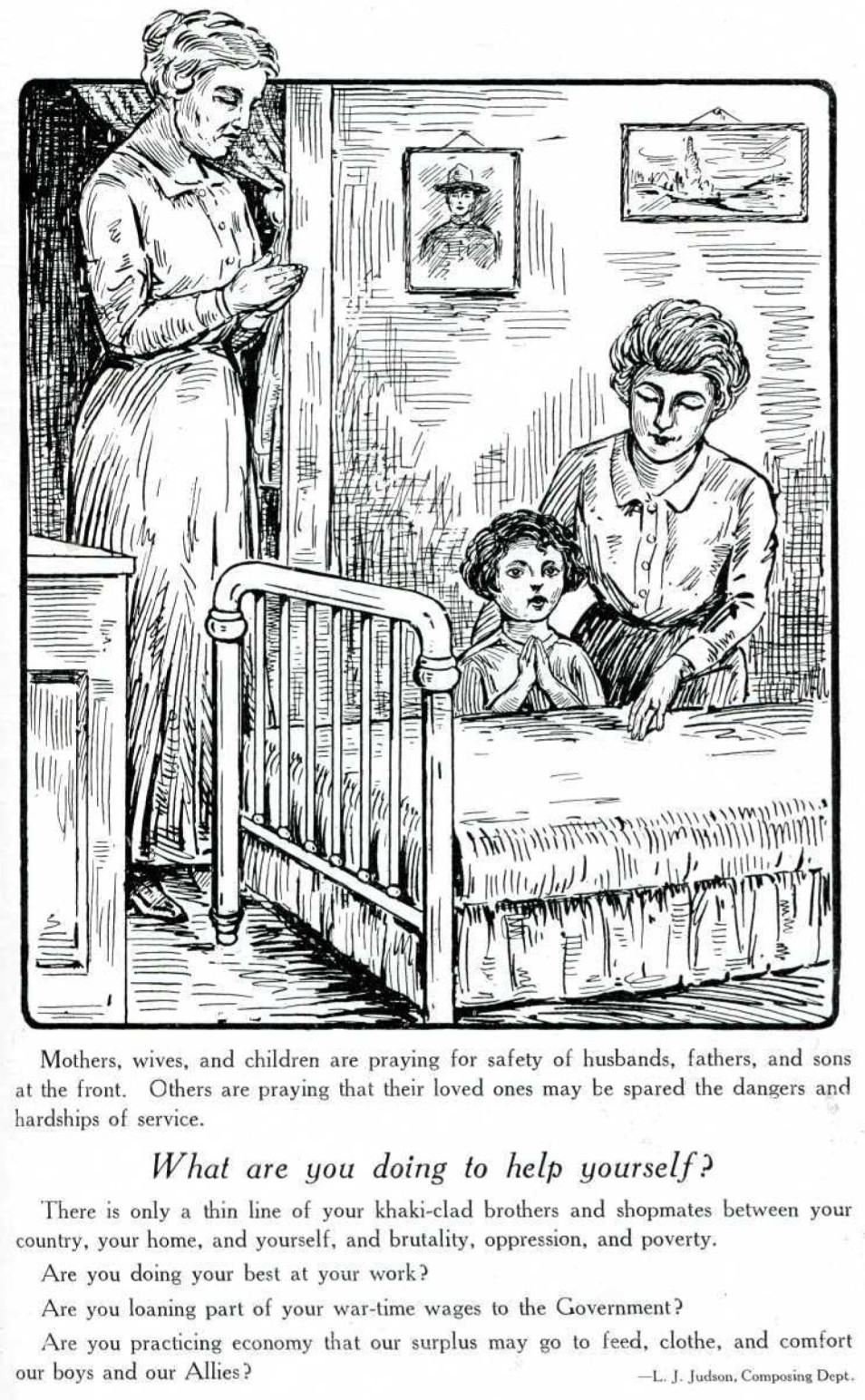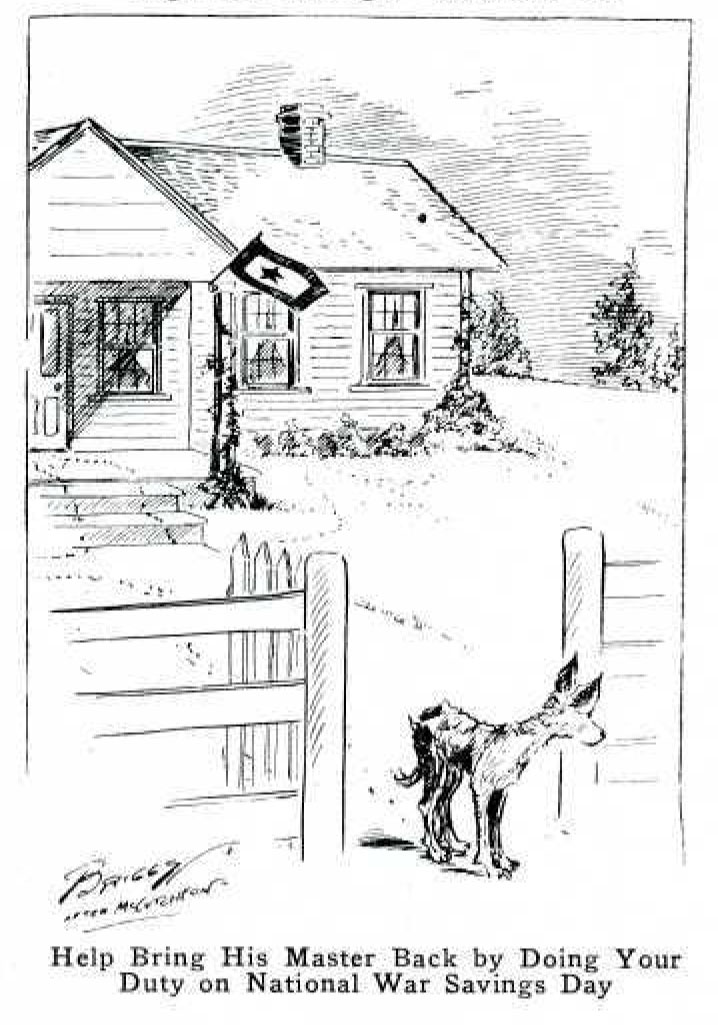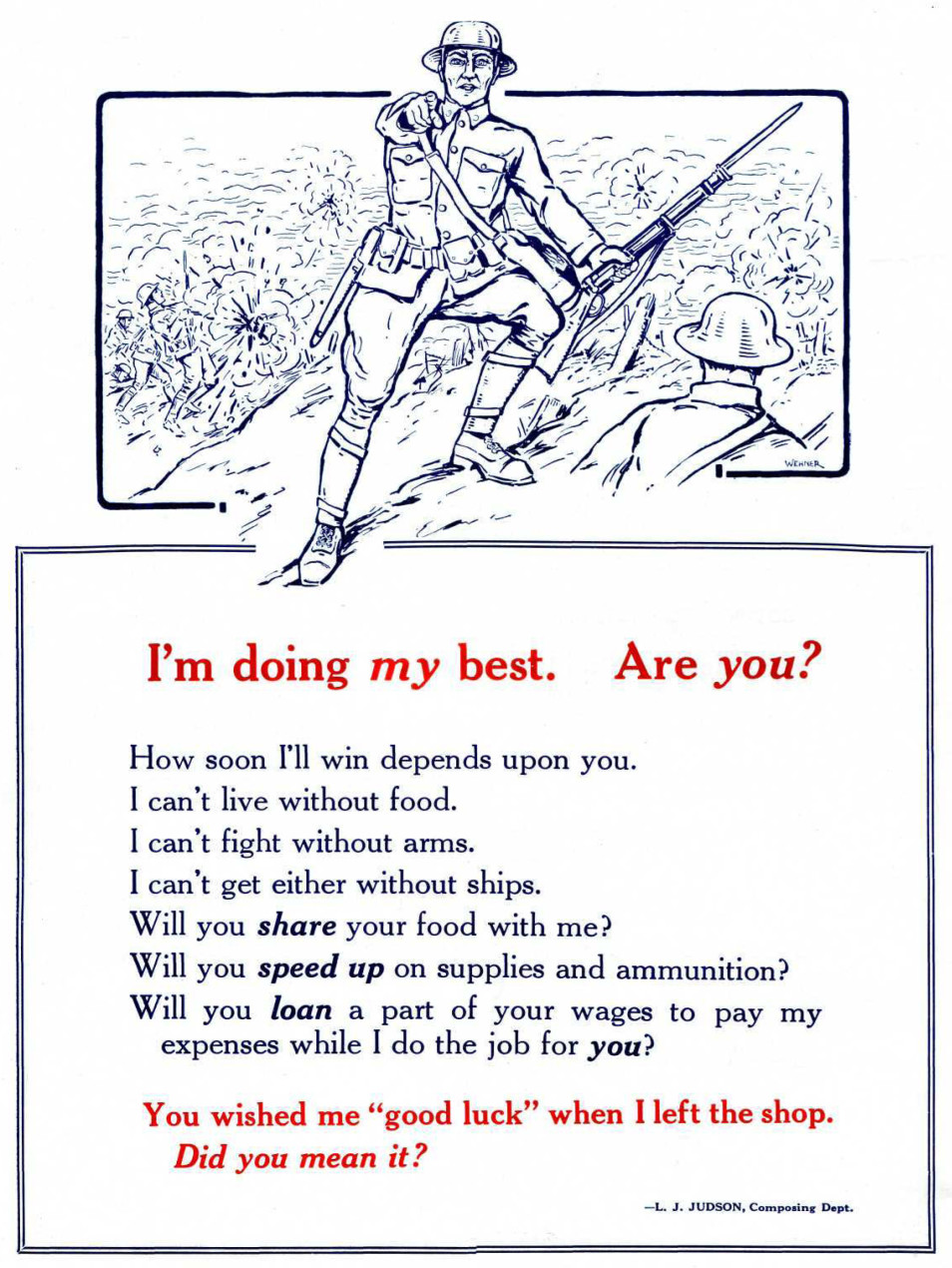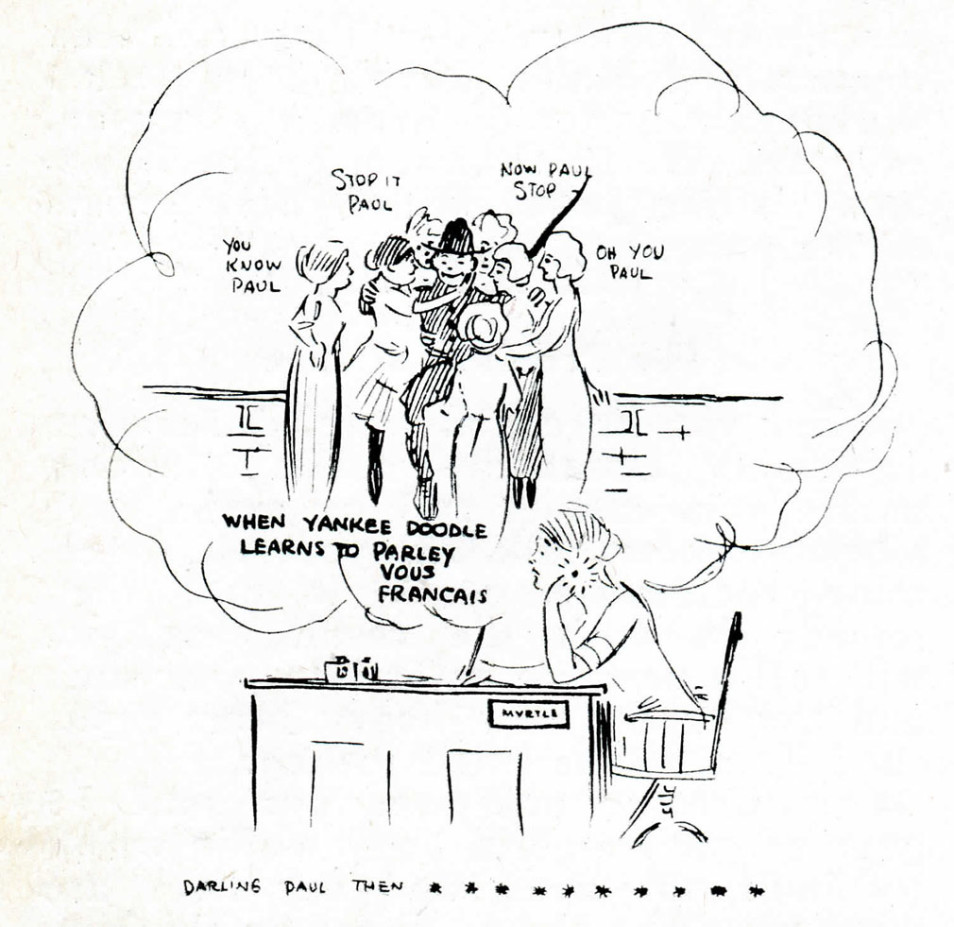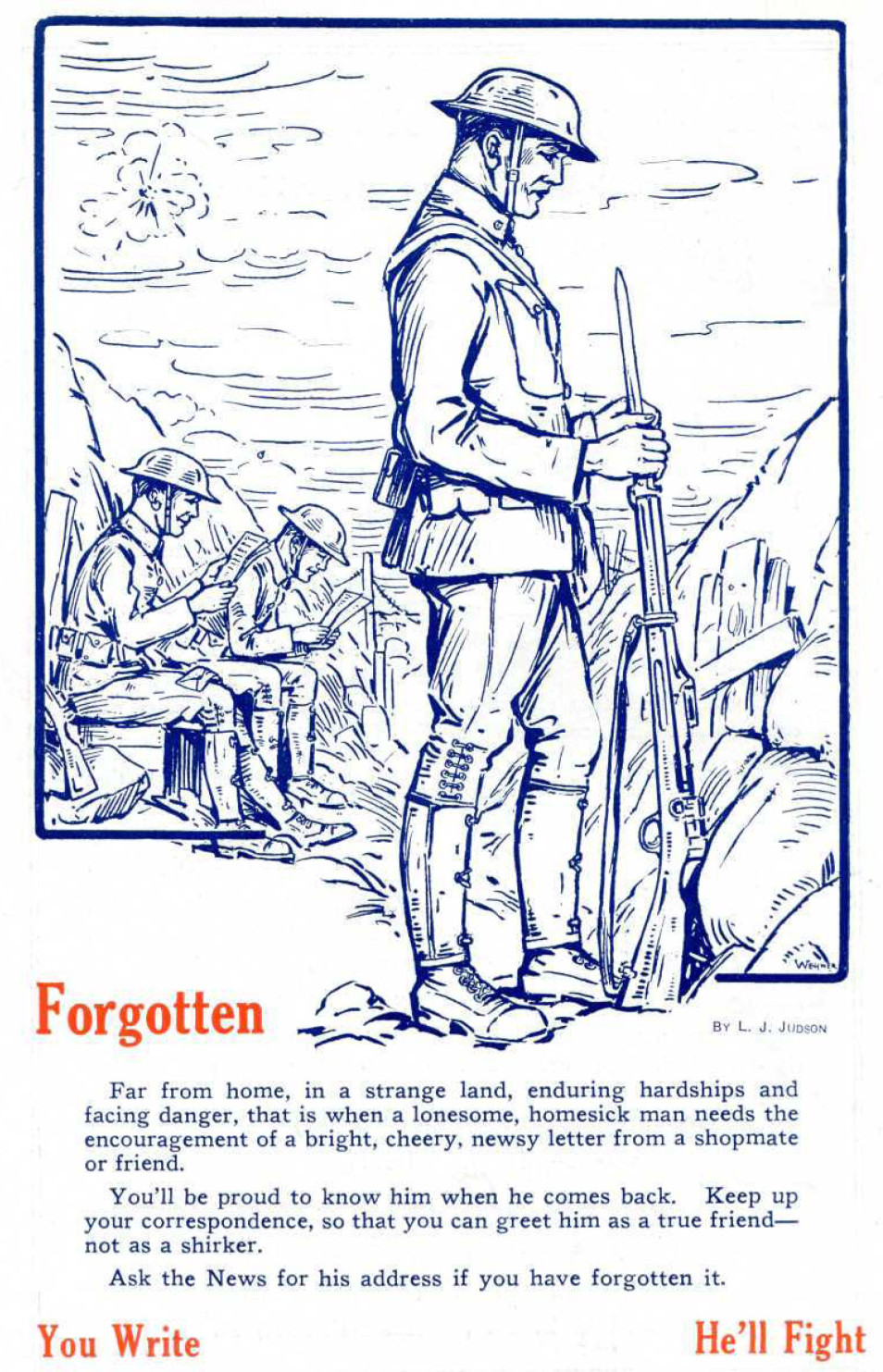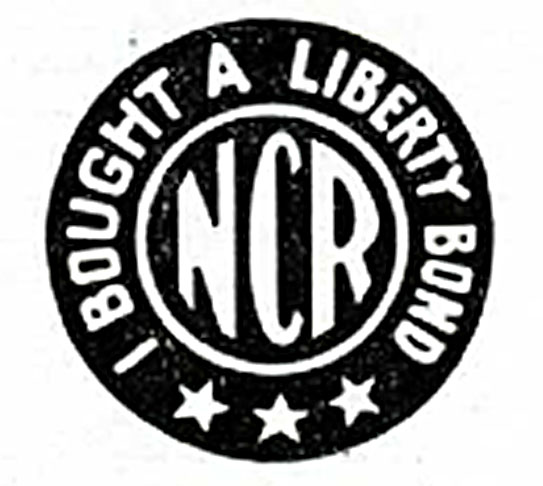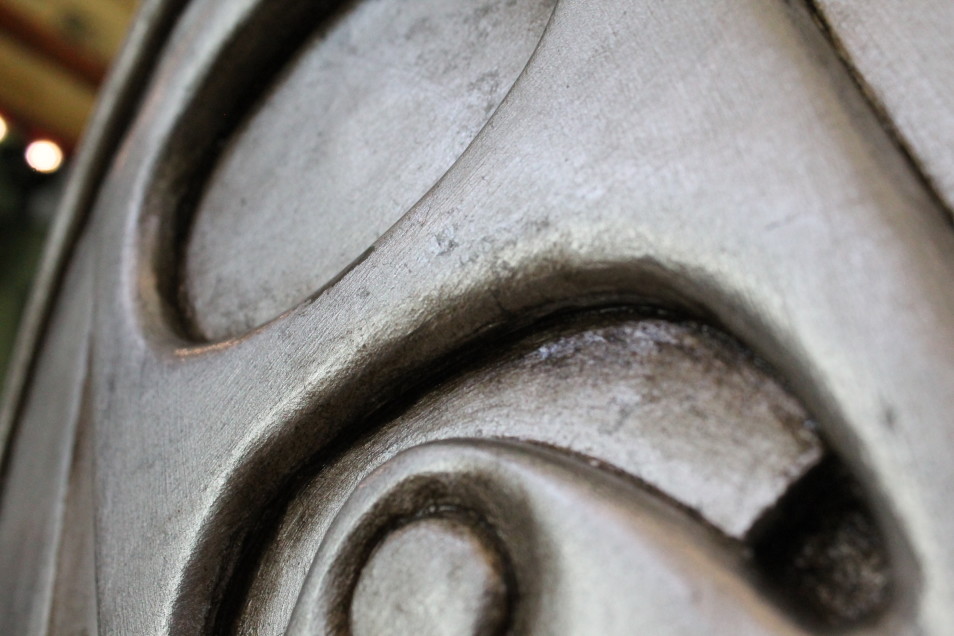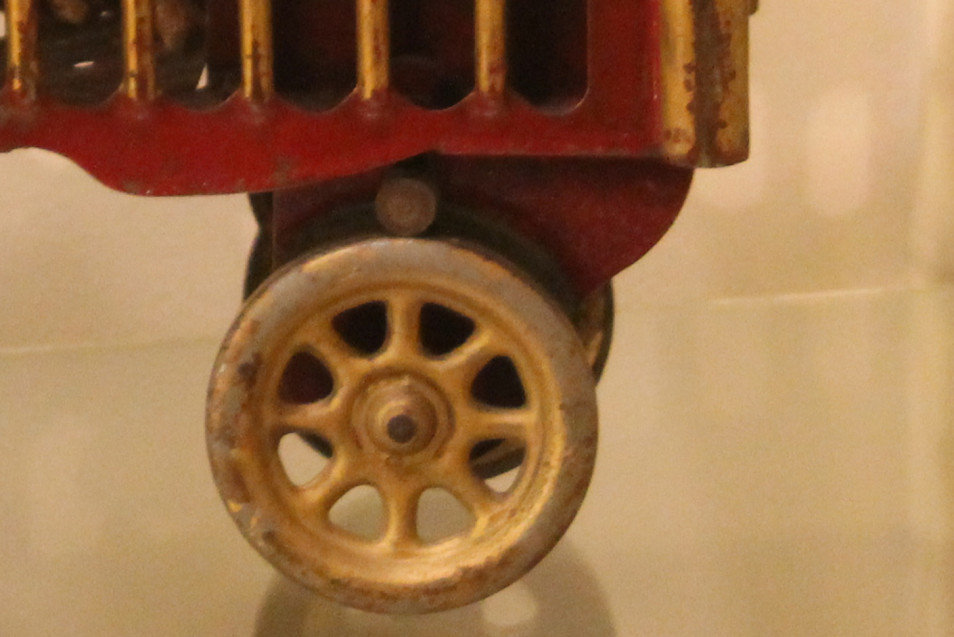Slides are Temporarily Closed
Following the themes found in our newly expanded Print Shop, Carillon Historical Park is building a primitive papermill. Here is a picture of the foundation along with a rendering of the timber frame.
The future papermill will serve as an immersive exhibit allowing guests to view how early mills functioned and the technology progressed through the 19th century. Guests will be able to explore the mill and make their way up to a bridge leading over the new railroad to the Glacial slides. Due to the ongoing construction the slides will be closed until the mill is completed later this year.
Visit Carillon Historical Park today and join us in our mission to inspire generations by connecting them with the unique people, places, and events that changed Dayton and the world.
Trees of Carillon Park – American Beech
American Beech – Fagus Grandifolia
A slow-growing tree known for its smooth, thin, gray bark and spreading canopy, the American beech is found throughout Ohio. Featuring a short, rounded, often hollow trunk, it is frequently used as a home by animals such as squirrels, opossums, and racoons, and when fully matured, it can reach a height of 60-80 feet. Adaptable to various soil pH levels, it prefers a rich, well-drained soil with consistent moisture; it also prefers partial or direct sunlight, though can survive in shadier conditions.
The leaf of an American beech is 2-4 inches long and simple, growing in an alternating pattern, with slightly undulating margins and coarse serrations. In fall, the leaves deepen from a yellow-green shade to a rich golden-brown. Younger trees then hold onto these leaves through winter while older beeches will lose all but the leaves on their lower, interior branches. Beeches produce a fruit with a prickly outer husk, which, in late summer and early fall, splits open to reveal one or two edible, triangular nuts that are high in fat and protein, eaten by both birds and mammals.
Beech wood is known for its strength, ability to be bent once steamed, and tendency to wear smoothly. For this reason, it is historically the wood of choice for a wooden plane body, a common woodworking tool used to smooth and shape other woods. It is also traditionally a wood of choice for chair-making, thanks to its pliable nature, at least after steaming.





Citations:
Information:
https://archive.org/details/woodwrightsshopp0000unde/page/12/mode/1up?q=Beech
Underhill, Roy. 1981. “The Woodwright’s Shop : A Practical Guide To Traditional Woodcraft : Underhill, Roy : Free Download, Borrow, And Streaming : Internet Archive”. Internet Archive. https://archive.org/details/woodwrightsshopp0000unde/page/n2/mode/1up?q=.
ODNR Division of Wildlife. 2020. “Trees Of Ohio Field Guide”. Columbus: Ohio Department of Natural Resources.
Images:
Beech_amr_lf_lg.jpg
beech_amr_lf2_lg.jpg
7743232.jpg
a33753ecfebfb448d2f3545111b6f89a.jpg
The Collections Corner | March 29, 2016
“Full garbage pails in America mean empty dinner pails in America and Europe.”
– Herbert Hoover, United States Food Administrator, NCR News, November 1917
Men rushed to answer the nation’s call to arms when the United States entered the Great War. The wives and mothers who were left behind were encouraged to not only work in the factories to manufacture essential war materials, but also to keep up morale and take care of hearth and home while the men were away. Over There: Dayton in the Great War, an exhibit opening at Carillon Historical Park in May 2016, will explore the many ways in which the women of Dayton worked tirelessly to “do their bit” in support of the Allied effort during this monumental conflict.
By the time the United States entered World War I in 1917, much of Europe had been embroiled in the conflict for several years. Men had traded plows for rifles on both sides of the conflict, laying to waste vast amounts of once fertile farmlands with the resulting wide spread food shortages. Europe found itself in desperate need of sustenance. Shortly after the United States declared war on Germany, President Woodrow Wilson asked Herbert Hoover to serve as the wartime food administrator, Hoover accepted but refused any and all financial compensation. The challenge for the United States would be to not only feed itself and its troops abroad, but also provide for the Allies. Hoover immediately began educational programs to encourage American households to conserve food. Phrases like “Meatless Mondays” and “Wheatless Wednesdays” were coined by the food administration in an attempt to urge citizens to be mindful of what they were purchasing and consuming. Citizens were encouraged to eat less, grow more, and work more efficiently. New terminology was adopted during wartime, to include words like “Hoovering” (not vacuuming) and “Hooverism”, and women joined “Hoover” clubs and became members of the “Hoover Army” by practicing conservation methods at home. The following are excerpts from articles on gardening and the “Hoover Army” from the April 1917 and the September 1918 issues of the NCR News:
“…This is but one way to help in winning the war. It is an obligation of all that can, to plant gardens. Every ounce of food-stuffs grown this spring will count in the balance that shall turn the scale of the war to a victory for the Allies. Let us all plant gardens. Now, all together, “bigger and better gardens.”- J.B.
“…The Food Conservation Movement will be brought before members by means of lectures and demonstrations so that every N.C.R. woman will become a soldier in the great Hoover Army, whose battles are no less important than those being fought by the great American army “over there”.”
As food administrator, Hoover had control over nearly all aspects of American food production. He set wages and prices for farmers and their products, and told farmers what and how much to grow. He also set limits on what products were made available to the citizens at home and what was then sent to our troops abroad. He was also responsible for setting prices for products in an effort to avoid speculation, hoarding, and price gouging. After the war was over, Europe’s need for food grew even more critical. Hoover organized shipments of food to feed the millions of starving citizens throughout 23 war torn nations in central Europe.
The Collections Corner | March 15, 2016
“Our old shopmates, our brothers, and our sons are standing between our homes, our country, our flag, and moral and industrial slavery.” – L.J. Judson, NCR News, March 1918
With thousands of Dayton fathers and sons answering the nations call to arms during the First World War, many a window throughout the city featured a small rectangular flag. This flag, with its blue five-pointed star on a white ground surrounded by a thick red border, quickly became an important symbol of the sacrifice made by those left behind on the home front. The idea for the flag came to Army Captain Robert L. Queisser, of the 5th Ohio Infantry, after suffering an automobile accident which resulted in disabilities severe enough for him to be mustered out of military service. During his confinement, with two sons of his own who were in active military service, Queisser began thinking about how a mother might find solace and comfort in having some symbol that she could refer to while her son was away serving his country. It was then that the idea and design of the service flag came to mind. By September 1917, Ohio governor, James M. Cox, had officially adopted the service flag designed by Queisser, who patented his design on November 6, 1917. The following poem, featured in the December 1917 issue of the NCR News, Vol. IV, No. 6, was published shortly after the banner’s design was adopted and patented:
“The Service Flag
Dear little flag in the window there Hung with a tear and a woman’s prayer; Child of Old Glory, born with a star- Oh, what a wonderful flag you are! Blue is your star in its field of white, Dipped in the red that was born of fight; Born of the blood that our forbears shed To raise your mother, The Flag, o’erhead.
And now you’ve come, in this frenzied day, To speak from a window- to speak and say: “I am the voice of a soldier-son Gone to be gone till the victory’s won.
“I am the flag of The Service, sir; The flag of his mother- I speak for her Who stands by my window and waits and fears, But hides from the others her unwept tears.
“I am the flag of the wives who wait For the safe return of a marital mate, A mate gone forth where the war god thrives To save from sacrifice other men’s wives.
“I am the flag of the sweethearts true; The often unthought of- the sisters, too I am the flag of a mother’s son And won’t come down till the victory’s won! ”
Dear little flag in the window there, Hung with a tear and a woman’s prayer; Child of Old Glory, born with a star- What a wonderful flag you are!
The banner’s design, which wasn’t standardized and codified until the end of World War II, can feature either blue stars or gold stars. Living servicemen and women are represented by a blue star while those who had lost their lives in service to their country are represented by a gold star. Blue Star Mothers and Gold Star Mothers organizations have been established, with the Gold Star Mothers having been organized during the First World War and, like the service flag itself, both organizations continue to exist today.
The Collections Corner | March 1, 2016
““In times of war “neutrality” means one of two things: Treason or cowardice.”
– Anonymous, NCR News, April 1918
When the United States entered World War I in 1917, Dayton was a manufacturing powerhouse, and as such, supplied the Allies with essential parts and equipment needed to win the war. The city also provided manpower, as thousands of Dayton’s own either enlisted or were drafted. These men played an active role in the fighting overseas, serving in all branches of the military, and in all fields, including infantry, artillery, armor, engineers, and aviation. Many of Dayton’s own served with distinction in several of World War I’s greatest battles, such as St. Mihiel and Meuse-Argonne. With so many men leaving for the battlefields of Europe and large government contracts flooding in, factories were saddled with the task of finding and training a new workforce. For example, the National Cash Register Company, which was at the time one of Dayton’s largest employers, lost a significant portion of its skilled workforce to the local recruitment offices and draft board. A short article featured in the July 1918 issue of the NCR News, Vol. V, No. 1, tells of one such group of draftees:
“Fifty Men Leave Service
Of Best Employer in America.
Approximately fifty men; capable and experienced workmen laid down their tools and left the service of the Company in the recent draft.
No, there wasn’t a strike or any kind of labor trouble; nor were the men dissatisfied with their pay. They came from nearly every department, and left the service of the Company to go to work for their Uncle at Camp Zachary Taylor, at Louisville, Kentucky. They are the latest addition to the more than six hundred men from the N.C.R. Company, who are now fighting to make the world a decent place to live in…”
For more on Dayton’s important role in the First World War, be sure to visit: Over There: Dayton in the Great War, a special commemorative exhibit opening at Carillon Historical Park in May 2016!
The Collections Corner | February 16, 2016
“Some of our girls seem to have grave fears as to just how our “boys” are greeted upon their arrival “over there”.” – Anonymous, NCR News, October 1918
By the time the United States entered World War I in 1917, a patriotic fervor was sweeping the nation due to the persuasive effect of government propaganda. The government knew that the support of its citizens was essential to success so it did all it could to increase morale amongst the populace. People everywhere were encouraged to take an active role to support the troops. Though women were only permitted to actively serve in a limited role on the battle front, things were very different back home. Aside from factory work, women were also asked to “do their part” in many other ways. One particular phenomenon was the exponential growth of both women’s and girl’s clubs. These kinds of organizations grew in both number and membership, as women of all ages were drawn together for support and comradery in answer to the country’s call to arms. One article, featured in the October 1918 issue of the NCR News, Vol. V, No. 4, explains:
“War-Time Fun for Girls
Girls’ clubs are emergency war work. When huge cantonments were slapped down close by sleepy little towns and thousands of handsome khaki-clad boys swaggered down the quiet street looking for a good time, the established social order was turned topsy-turvy. The startled mothers needed aid in directing the patriotic energy of their excited young daughters. Ninety-seven clubs have been established in cities and towns adjacent to camps. Eleven of these are for colored girls. One hundred and thirty-five trained club and recreation leaders are employed. These clubs accomplish two purposes: First, through the Red Cross Work Community Service, gymnastics, and articulate ideals they furnish the girls with something to think of besides romance of khaki. Second, they supplement the individual homes in furnishing gathering places, where girls and soldiers may play together. Girls faithfully perform club service and become hostesses at “soldiers’ parties.” Clubs usually develop some form of community helpfulness…”
Many of these organizations provided women an outlet, fulfilling a variety of needs both practically and socially. For example, the NCR Women’s Club created special committees during war-time to address special needs, including: Red Cross, Thrift Stamp, Factory War Work, Hoover, Community Welfare, School, Current Events, Publicity, Membership, and Social. The Factory War Work committee was tasked with not only finding female workers to help fill the needs of the factory, but also to help these women find suitable housing, which was in short supply. The Hoover committee concentrated their efforts on educating women on the need to ration and conserve foodstuffs; through activities like demonstrations and recipe exchanges, they worked to promote the government’s conservation program, saving materials and preventing waste. Many of these clubs encouraged their members to “do their part” in any number of ways, including, but not limited to: knitting sweaters, socks, and mittens for soldiers, writing letters and sending care packages to help keep up morale, rationing and conserving foodstuffs, growing vegetable gardens, buying war bonds, and making bandages for the Red Cross.
The Collections Corner | January 19, 2016
Many of Dayton’s sons played an active role in the fighting overseas by serving in all branches of the military. Thousands of Dayton men enlisted during military recruiting events, leaving their jobs and families behind in order to take up arms and fight for their country. Their families and loved ones were encouraged to send mail and care packages to the soldiers as for many of these young men; this would be their first time away from home. Troop morale was of utmost importance and folks we encouraged to do their share by keeping in touch with the boys in the trenches. The following are just two examples of articles published in issues of the NCR News in 1917:
“Do Your Share… According to the ruling of the Post Office Authorities it is possible for all of us to do our share in the way of furnishing suitable reading matter to our boys in the trenches. When you are finished reading a magazine or newspaper, regardless of weight, affix a one cent stamp on the front page and it will be forwarded to our forces. It can be dropped in any letter box or at the Post Office. Imagine the amount of good we can do by exerting a little effort on our part. These magazines and papers will be appreciated both by our boys in the trenches and also those who might become disabled and are confined in the hospitals. ”
– IV, Number 5, November 1917
“Write to the Boys at The Front… Next to “Mess” there probably isn’t anything more welcome to a soldier than tidings from home or a card from the boys on the job. Letters from home or the plant break the monotony of camp life and makes the soldier feel that his absence from home and friends is not entirely unnoticed. If you have visited any of the camps and note how eagerly the boys look for letters, you know what it means. So get busy and write some cheery news to the boys…”
– IV, Number 6, December 1917
In an effort to do their part to help maintain morale, NCR offered to provide any assistance necessary to help send mail to coworkers and family members serving in the military. The company also sent copies of the NCR News magazines to each of their employees who had enlisted.
The Collections Corner | January 5, 2016
“Send your money or go over yourself. Enlist or invest.” – Anonymous, NCR News, April 1918
When the United Stated entered the First World War in April 1917, the United States government, with the backing of the U.S. Treasury, issued a series of bonds known as Liberty Bonds to pay for the war. Focused propaganda programs were launched in an effort to get the American public to support the allied cause by purchasing these bonds. Citizens were bombarded on a daily basis with messages proclaiming that it was their civic and patriotic duty to purchase these bonds. Manufacturing firms, like NCR, often supported these bond issues by posting signage throughout their factory buildings, as well as hosting rallying events like bond drives. On October 3, 1917, a Liberty Loan Booster Meeting was held in the NCR Schoolhouse in support of the Second Liberty Loan, which had been issued by the government on October 1, 1917. A description of the rally was printed in the November 1917 issue of the NCR News, Vol. IV, No. 5:
“Before entering the hall we could hear the fife and drum corps, who were dressed in colonial costume, depicting the spirit of ’76… The stage was occupied by a number of Red Cross nurses at the left-hand wing, by the former employees of N.C.R., who have been drafted, and are now stationed at Chillicothe, on the left center; on the right center by a group of veterans from the Soldiers’ Home, and on the right wing by members of the Aviation Corps- former N.C.R. employees- and by twelve Boy Scouts.”
Proclaiming that purchasing the government bonds was not only a patriotic duty but also a sound investment, NCR went so far as to finance employee purchases of the bonds by establishing interest free loans with a payment rate of $2 per week for each $50 bond. By the end of the rally that evening, the company had raised $101,500 for the war effort. Every employee who had purchased a bond that night was given the emblem pictured here.
ArtiFACT Friday- December 18, 2015
Mystery at the Museum …
Here’s a detail image of this week’s mystery artifact. Do you know what artifact is pictured here and which building you can find it in at Carillon Historical Park? Post your guess on our facebook page, or or e-mail your submission to info@daytonhistory.org with the subject listed as “ArtiFACT Friday,” for a chance to win a FREE Family Membership for a year! For complete contest rules, please click on our Arti-FACT Friday Contest link on our home page. For those of you sleuths, who want a sneak peek at next week’s Mystery at the Museum artifact photo, pick up a FREE copy of the Dayton City Paper next Tuesday!
To see other historical images from our collection, search our Digital Photo Archive.
ArtiFACT Friday- December 11, 2015
Mystery at the Museum …
Here’s a detail image of this week’s mystery artifact. Do you know what artifact is pictured here and which building you can find it in at Carillon Historical Park? Post your guess on our facebook page, or or e-mail your submission to info@daytonhistory.org with the subject listed as “ArtiFACT Friday,” for a chance to win a FREE Family Membership for a year! For complete contest rules, please click on our Arti-FACT Friday Contest link on our home page. For those of you sleuths, who want a sneak peek at next week’s Mystery at the Museum artifact photo, pick up a FREE copy of the Dayton City Paper next Tuesday!
To see other historical images from our collection, search our Digital Photo Archive.


